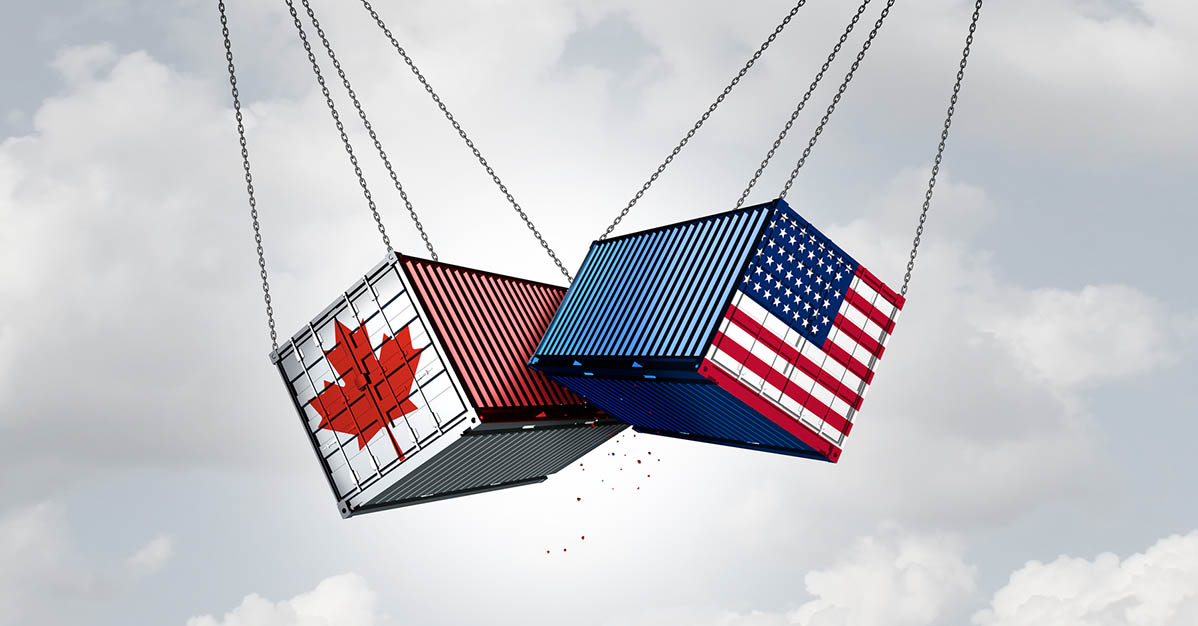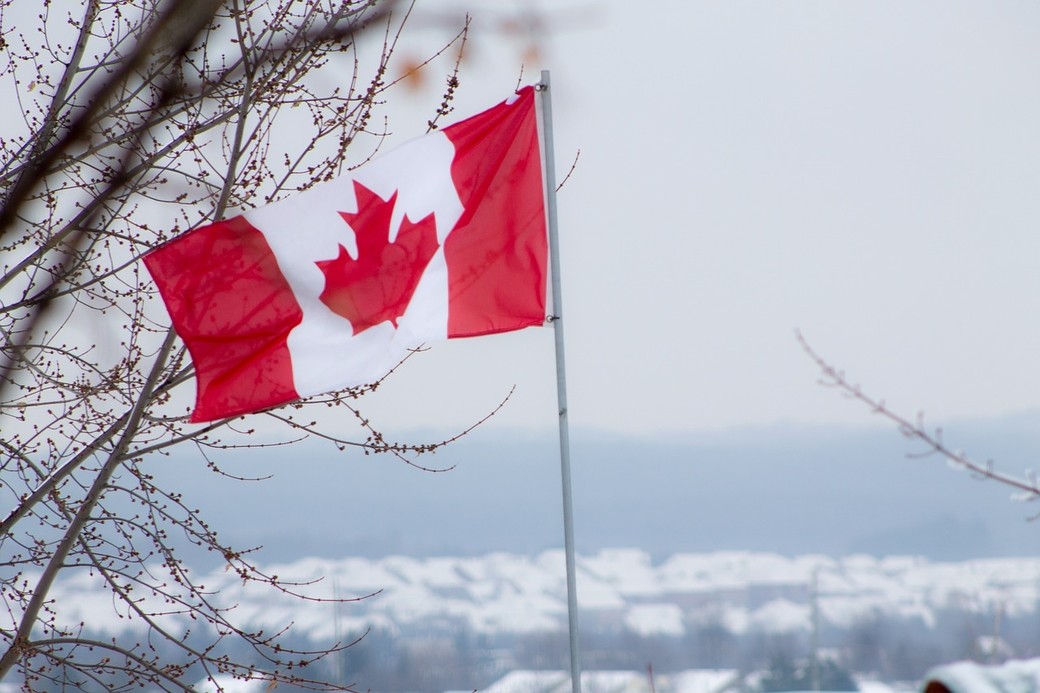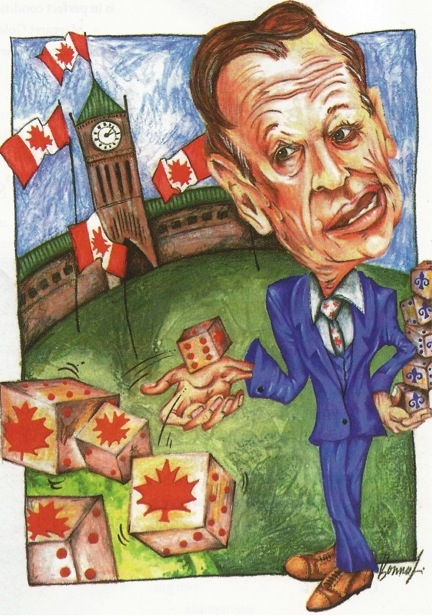
True North Strong and Free: Canada’s Fight to Control Its Own Economy
Canada’s Long Struggle for Economic Sovereignty
U.S. President Donald Trump’s idea of making Canada the 51st state is like trying to fit a hockey puck into a baseball glove—it’s never going to work. We’ll stick to our maple syrup, moose, Mounties, polar bears, and Canada geese, thank you very much. Trump isn’t the first American proponent for the annexation of Canada, and he certainly won’t be the last. Since the end of World War II, Canadian economic nationalism has ebbed and flowed in response to the Manifest Destiny wet dreams of American outliers, the pressures of globalization, American economic dominance, and political ideology.
The question of who controls Canada’s vast natural resources and key industries has remained central to economic policymaking. From postwar nationalistic aspirations to the free trade debates and the dismantling of protective measures, Canada has often found itself fighting to maintain control over its own economy and resources.
A Brief History: The Beginnings of Economic Nationalism
In the aftermath of World War II, Canada sought to establish an independent economic identity. With a resource-rich landscape and a rapidly industrializing economy, the Louis St. Laurent government recognized the need to ensure that Canada’s wealth was not merely extracted for the benefit of foreign investors, particularly from the United States.
This led to the 1955-1957 Royal Commission on Canada’s Economic Prospects, chaired by Walter Gordon. The commission concluded that foreign control, particularly in the resource sector, was a major concern. It recommended policies to ensure greater Canadian ownership of key industries and to prevent economic decision-making from being dominated by non-Canadians. However, implementation of the report proved challenging due to political resistance and entrenched foreign interests.
Gordon would go on to be finance minister under Lester B. Pearson and introduced a series of budgets in the 1960s aimed at reducing foreign ownership and increasing Canadian economic sovereignty. His 1963 budget proposed higher taxes on foreign-owned businesses and incentives for Canadian investors to buy back domestic industries. The business community, particularly American investors, reacted harshly to this, seeing it as protectionist. The Canadian dollar dropped, Pearson’s government softened its stance, and many of Gordon’s proposals were watered down or abandoned. However, his influence continues to this day in discussions about Canada’s economic independence.
Dual-Class Shares and the Foreign Investment Review Agency (FIRA)
In the 1970s, the Pierre Trudeau Liberal government introduced dual-class share structures to counter foreign takeovers, protect natural resources, and support Canada’s business community. This policy allowed companies to issue both voting and non-voting shares, enabling founders and Canadian investors to retain control while attracting foreign capital. Numerous Canadian companies have since used dual-class shares to maintain control over key industries while accessing capital markets. Notable examples include Rogers Communications, Bombardier, Magna International Inc., Power Corporation, Quebecor, Onex Corporation, Spin Master, and Shopify. These companies have employed dual-class share structures to preserve control among Canadian founders. Shopify, the renowned technology company, was an Ottawa-based start-up whose founders retained decision-making control through a dual-class shares structure during its IPO. This practice has enabled Canadian companies to access public capital while maintaining control among their founders.
The Foreign Investment Review Agency (FIRA) was established in 1974 under Prime Minister Pierre Trudeau. Its purpose was to screen foreign investments and acquisitions to ensure they benefited Canada. The move was a direct response to concerns that American and multinational corporations were buying up strategic industries. However, by the 1980s, under Brian Mulroney’s pro-free-market agenda, FIRA was dismantled and replaced with the more investor-friendly Investment Canada Act, marking a shift away from economic nationalism.
The Free Trade Battles-Brian Mulroney’s Nation Building and John Turner’s Warnings
In the late 1980s, Canada faced a critical economic decision: the debate over free trade with the United States. The 1988 Canada-U.S. Free Trade Agreement (FTA), which later evolved into NAFTA, fundamentally changed Canada’s economic relationship with its largest trading partner. Prime Minister Brian Mulroney, a Progressive Conservative, was a strong supporter of free trade. In contrast, Liberal Opposition leader John Turner was a passionate and vocal critic, arguing that free trade would erode Canadian sovereignty, particularly in energy and manufacturing. During a debate in the 1988 election, Turner famously accused Mulroney, saying, “You’ve sold us out.” He warned that Canada would lose control over its industries, resources, and economic policies to U.S. corporate interests.
While Turner’s concerns were not unfounded, Mulroney’s free trade policies also brought significant benefits to Canada. Increased exports allowed Canadian businesses to gain greater access to the U.S. market, leading to economic growth. Job creation was another benefit, as many industries, particularly in manufacturing and natural resources, expanded due to better trade conditions. Additionally, foreign investment increased, making Canada a more attractive place for business and leading to economic expansion. However, there were also downsides to free trade. The manufacturing sector declined as many Canadian jobs moved to lower-cost jurisdictions, particularly in Mexico after NAFTA. Canada experienced a loss of policy autonomy, as it had to follow trade rules that sometimes limited its ability to implement protectionist policies. Another challenge was that the increase in foreign investment came with increased foreign control over key industries, reducing Canadian influence over its own economy.
Economic Sovereignty Under Threat
Despite NAFTA, the USMCA, and other trade agreements, Canada must continually push back against American economic influence and even “geographical creep” on its borders. During Donald Trump’s first administration, threats of tariffs on steel and aluminium, attacks on the dairy industry, and the renegotiation of NAFTA (resulting in the USMCA) put Canadian policymakers on edge. Trump’s protectionist stance underscored the risks of economic dependence on the U.S. and reinforced the need for Canada to diversify its trading partners.
The Trump administration also suggested that the Canadian Arctic was not part of Canada’s sovereign territory but rather “international.” Canada pushed back firmly, asserting its sovereignty and maintaining control over the Northwest Passage. Similarly, Canada has consistently fought against unfair U.S. tariffs on softwood lumber, taking disputes to international trade courts—where rulings have often upheld Canadian trade rights.
A well-known example of Canada’s resolve involved the Canadarm, the robotic arm developed for NASA’s space shuttles. Initially, the U.S. resisted placing a visible “Canada” wordmark on the arm. However, Canada refused to back down, ensuring that its contribution was recognized. Over the following five decades, the Canadarm became a global symbol of Canadian technological excellence, complete with its national branding—demonstrating that Canada would not allow its achievements to be erased.
The Future: Retaining Control Over Resources and Economic Sovereignty
President Trump’s latest suggestion that Canada could become the 51st U.S. state may be political bluster, but it underscores a serious reality: Canada must safeguard its natural resources—from oil and gas to critical minerals like lithium—by ensuring they remain under Canadian ownership and control. As the world transitions to green energy, demand for rare earth minerals is skyrocketing. China has long treated its rare earth industry as a strategic asset, restricting exports and aggressively acquiring global supplies to strengthen its economic and geopolitical position. Canada would be wise to adopt the same level of vigilance, protecting its critical resources to ensure long-term national security, economic independence, and prosperity for Canadians.
Recognizing these risks, the Canadian government has imposed some restrictions on foreign takeovers in key resource industries like lithium, cobalt, and nickel projects. Canada has a Critical Minerals Strategy aimed at bolstering domestic mining, refining, and processing capacity to further reduce reliance on foreign-controlled supply chains. The government has also committed billions in funding to support critical mineral development and has formed strategic partnerships with the U.S. and the EU to secure stable supply chains. However, many experts believe these measures do not go far enough. They argue that Canada must further strengthen its domestic refining capabilities, increase government oversight of resource investments, and ensure that Canadian companies—not foreign entities—control the extraction and processing of these essential materials. Without stronger protections, Canada risks losing control over the very resources that will drive the next generation of global industry and innovation.
Experts like Jim Stanford, an economist specializing in Canadian economic policy, argue that “Canada needs to assertively defend its strategic industries. Globalization has shown that without proper safeguards, foreign investors will prioritize profits over national interests.”
Tom D’Aquino, a prominent business leader and former head of the Canadian Council of Chief Executives, has emphasized that Canada must strike a balance between economic openness and national interest. He argues, “Trade agreements have served Canada well, but we must be vigilant in protecting our industries and ensuring that foreign investment does not come at the expense of Canadian control.”
Similarly, economist Armine Yalnizyan says that “Canada needs a more sophisticated industrial policy that prioritizes innovation and domestic job creation, rather than just being a supplier of raw materials to the world.”
Time to Grow Up as a Nation
If Canada wants to secure its future, it must act now. This means modernizing Arctic security, committing to real NATO funding, protecting key industries, preventing foreign control of energy and resources, and diversifying trade beyond the U.S. Canada’s sovereignty is at stake. Will we step up, or let others decide for us?
Photo: iStock







